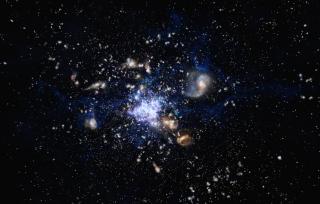Bibcode
Bakx, Tom J. L. C.; Dannerbauer, Helmut
Bibliographical reference
Monthly Notices of the Royal Astronomical Society
Advertised on:
9
2022
Citations
10
Refereed citations
9
Description
We present methods to (i) graphically identify robust redshifts using emission lines in the (sub)mm regime, (ii) evaluate the capabilities of different (sub)mm practices for measuring spectroscopic redshifts, and (iii) optimize future (sub)mm observations towards increasing the fraction of robust redshifts. Using this publicly available code (https://github.com/tjlcbakx/redshift-search-graphs), we discuss scenarios where robust redshifts can be identified using both single- and multiple-line detections, as well as scenarios where the redshift remains ambiguous, even after the detection of multiple lines. Using the redshift distribution of (sub)mm samples, we quantify the efficiencies of various practices for measuring spectroscopic redshifts, including interferometers, as well as existing and future instruments specifically designed for redshift searches. Finally, we provide a method to optimize the observation strategy for future (sub)mm spectroscopic redshift searches with the Atacama Large Millimetre/submillimetre Array, where 2 mm proves indispensable for robust redshifts in the $\mathit{ z}$ = 2-4 region.
Related projects

Molecular Gas and Dust in Galaxies Across Cosmic Time
Two of the most fundamental questions in astrophysics are the conversion of molecular gas into stars and how this physical process is a function of environments on all scales, ranging from planetary systems, stellar clusters, galaxies to galaxy clusters. The main goal of this internal project is to get insight into the formation and evolution of
Helmut
Dannerbauer